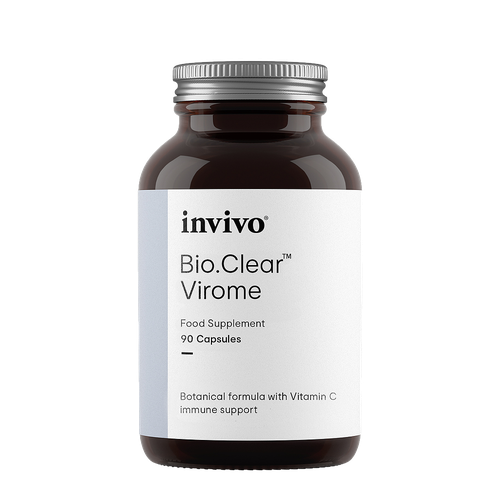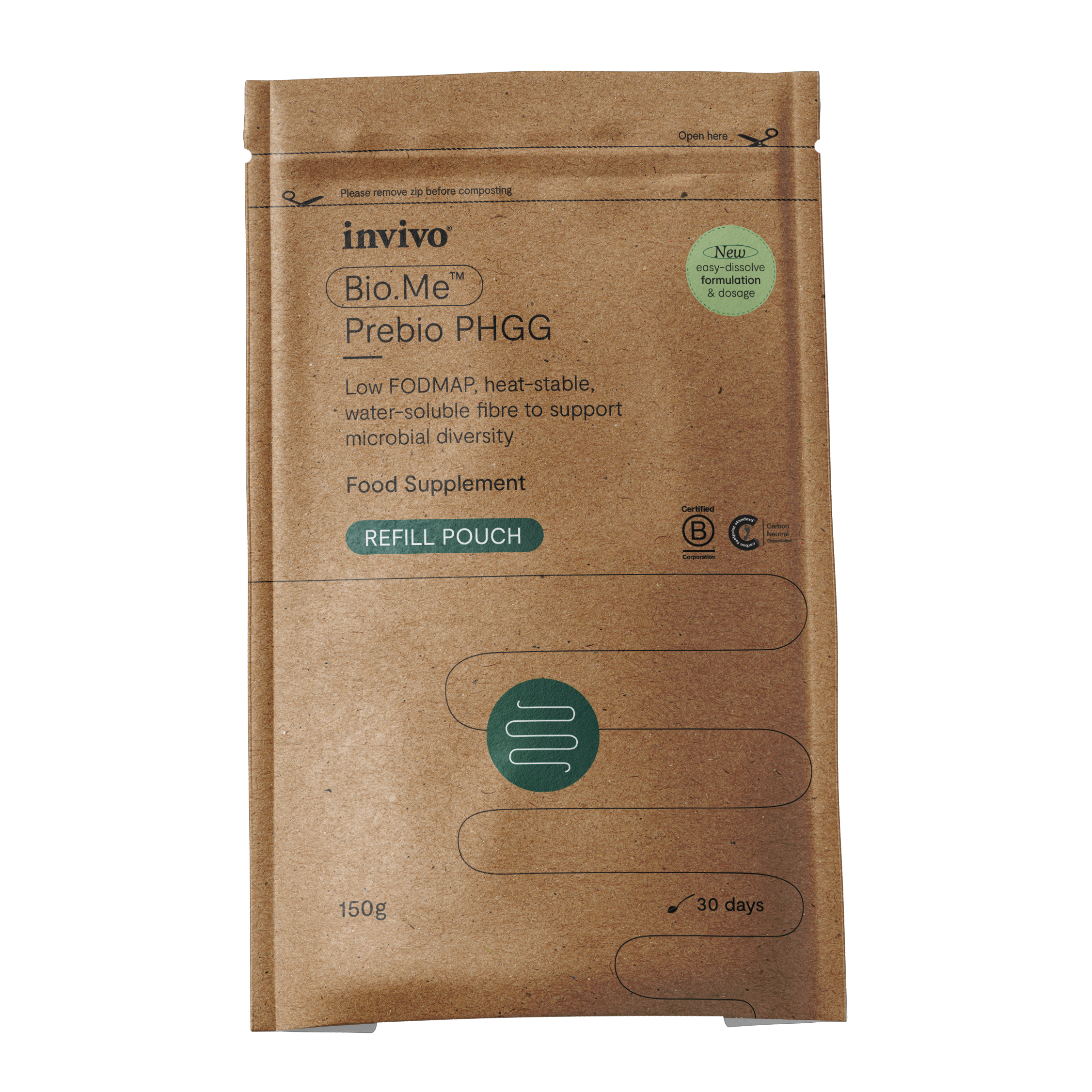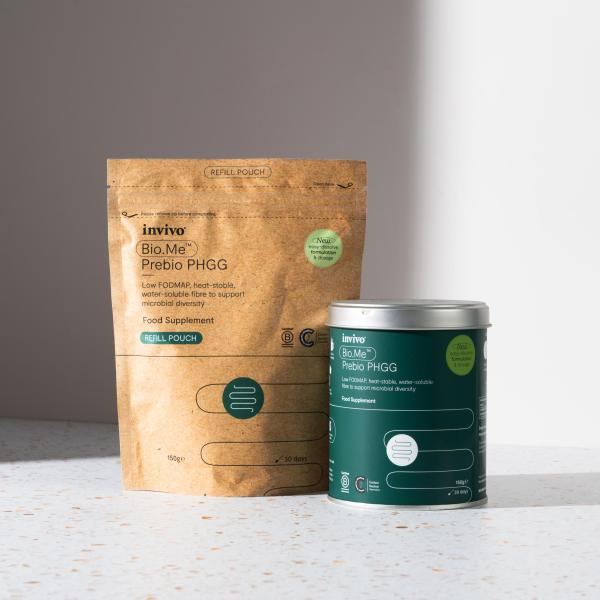Prebiotics are an essential component of our microbial support toolkit for improving the health of the gut microbiome. Prebiotics are defined as a substrate which selectively supports the growth of commensal bacteria which, in turn, may confer a benefit for the health of us, the host.(1) The range of evidence-based health benefits which can be experienced following prebiotic supplementation are far-reaching and span almost each body system, ranging from their ability to improve irritable bowel syndrome (IBS) and small intestinal bacterial overgrowth (SIBO),(2,3) to atopic conditions, skin health, sleep quality, and stress management.(4–7)
Given the range of health benefits which may be experienced following an increased prebiotic intake, feeding our commensal gut microbiota with prebiotics should form an important aspect of most, if not all, health protocols, especially bearing in mind the growing issue of ‘missing microbes’. With so many different types of prebiotics available, ranging from partially hydrolysed guar gum (PHGG) and galacto-oligosaccharide (GOS) to aronia berry and pomegranate, choosing the right prebiotic for each client is a common clinical challenge and a question which we often discuss with fellow Healthcare Providers. To help you navigate this complex area, let us focus on GOS and how its role as a prebiotic fibre can be used clinically.
Introducing Galacto-oligosaccharide (GOS)
When evaluating which prebiotic fibre to use, it is important to understand the structure and molecular weight of each type as this determines how quickly it is fermented by our commensal gut microbiota and by which specific species. In turn, this helps to regulate the nature and degree to which it impacts the diversity and abundance of the gut microbiota and how it goes on to benefit human health.
Galacto-oligosaccharides are small chain polysaccharides primarily made of repeating units of galactose and glucose. The bonds that hold these monosaccharides together consist of linkages which are indigestible by human digestive enzymes, so GOS is a preferred source for bacterial fermentation in the colon. This is especially the case for Bifidobacterium as species within this genus make the enzyme, β-galactosidase, which can process the bonds in GOS. This function underlies the Bifidogenic property of GOS, as well as its ability to support the growth of Lactobacillus colonies too. As such, GOS is classed as a soluble prebiotic fibre.
There are two main types of GOS, beta-GOS and alpha-GOS:
- Beta-GOS: this type is manufactured from lactose in cow’s milk to mimic some of the functions of a class of prebiotics known as human milk oligosaccharides (HMOs). HMOs are naturally found in human colostrum and breast milk. They play an important prebiotic role for the breastfeeding infant, namely by encouraging Bifidobacterium and Lactobacillus growth in their gut which goes on to have a formative impact on the maturation and protection of their gut barrier and the overall balance of their immune system. To meet the ‘need’ for a practical alternative source of HMO-like activity which can confer health benefits for all ages, beta-GOS has been manufactured. This type of GOS has a few oligosaccharides in common with HMOs, including 3-, 4- and/or 6-galactosyllactose depending on the GOS preparation.(8) The GOS which we provide here at Invivo Healthcare is a significant source of 4-galactosyllactose. Unsurprisingly, it is beta-GOS which is increasingly used in infant formula to help mimic some of the gut microbiome benefits of breastfeeding. This type of GOS is low FODMAP1 and is one of the best researched prebiotics available. Beta-GOS tends to be the form commonly available in GOS supplementation.
- Alpha-GOS: this is the naturally occurring type of GOS which is abundant in pulses and legumes, especially soybeans and peas. It has some key structural differences to beta-GOS, including the presence of fructose, which means it is not suitable for a low FODMAP diet, and it is generally not used in supplemental form.
Both types of GOS have prebiotic properties. It is also worth noting that GOS has a low molecular weight which means it is rapidly fermented and able to provide a swift benefit to the balance and function of our commensal gut microbiota.(9–11)
Clinical Applications
When choosing the most tailored prebiotic solution for each client, we are initially guided by the results of a private stool test when these are available. This is a cutting-edge way of understanding the unique composition of their commensal gut microbiota and the overall health of their gut ecosystem (e.g. mucosal immunity, gut barrier), which collectively helps us to ascertain their unique prebiotic requirements.
We start by assessing their commensal bacteria and in particular, the relative abundance of commensal species such as Bifidobacterium spp., Lactobacillus spp., and Faecalibacterium prausnitzii. As already mentioned, one of the key attributes of GOS is its stand-out ability to increase large intestinal colonies of Bifidobacterium, as well as Lactobacillus spp. to a lesser degree. A more abundant Bifidobacterium colony can promote the growth of Faecalibacterium prausnitzii and Coprococcus eutactus through the process of cross-feeding (which we explore in our missing microbes article), conferring wider benefits for the commensal gut microbiota. Faecalibacterium prausnitzii and Coprococcus eutactus are important butyrate producer and butyrate is essential for a healthy gut barrier which has a multitude of health benefits for gut and systemic health.(12,13)
Increasing daily intake of GOS can be a tailored prebiotic intervention when these specific commensal bacteria are shown to be depleted and/or when this is suspected due to clinical symptoms which GOS has been shown to improve, such as IBS and atopy. An increased abundance of these keystone commensals can help to balance the wider ecosystem in the gut, especially by helping to stimulate secretory IgA (sIgA) production and supporting gut barrier function.(10)
At the same time, it is important to scrutinise the context. What conditions does this client have? Which conditions might they be at risk of given their family history? What are their health goals? Two of the best researched clinical applications of GOS are IBS and atopy:
- IBS – In a human clinical study of patients with IBS, GOS supplementation (3.5g or 7g per day) was shown to lead to a significant increase in faecal Bifidobacterium levels at both GOS doses compared to placebo, which corresponded with improved bloating, flatulence, and stool consistency. The group taking the higher daily dose of GOS also experienced an improvement in anxiety, highlighting possible benefits along the all-important gut-brain axis.(2) IBS often overlaps with small intestinal bacterial overgrowth (SIBO) and a small human study showed that 10g of GOS given twice a day can reduce breath hydrogen levels (often associated with SIBO) while simultaneously increasing faecal Bifidobacterium levels.(14)
- Atopy – in a large human clinical study, 1,223 pregnant women with a family history of atopy were supplemented with a probiotic strain and GOS for 2-4 weeks before delivery and their infants were then given the same probiotic and GOS for their first 6 months of life. While the incidence of all allergic diseases by 2 years was not affected by this nutritional intervention, it did significantly decrease the incidence of atopic eczema.(4) In the case of atopy, increasing Bifidobacterium in the gut may have a knock-on benefit for overall immune balance, so-called immunomodulation, not least by increasing sIgA, improving gut barrier health, and increasing anti-inflammatory cytokines (e.g. IL-10, IL-8).(15) In the case of eczema, it is worth noting that GOS has been shown to improve skin barrier function and hydration,(7) which indicates that it might benefit a range of dermatological issues by supporting the innate healing capacity of the skin.
In these specific clinical scenarios, GOS can be a tailored prebiotic intervention with great clinical promise, especially if private stool test results show a depleted colony of Bifidobacterium for example. GOS may also confer other health benefits:
- Supports intestinal absorption of minerals, a mode of action which Dr Andrea Monteagudo-Mera, a member of our Clinical Advisory panel, recently wrote about in her article about iron and the gut microbiome. GOS supplementation may help to improve iron absorption from iron supplementation in iron depleted young women (16). It may also help to mitigate the negative effect of iron supplementation on the gut microbiome and immunity, especially in infants, not least by helping to conserve Bifidobacterium and Lactobacilli colonies and reducing the intestinal abundance of pathogen virulence genes, damage to the gut wall, and risk of respiratory tract infections.(17) This research widens our appreciation of the potential clinical application of GOS to other prevalent health issues, including iron-deficiency anaemia, as well as osteoporosis. With regards to the latter, ongoing research indicates that dietary GOS can increase calcium absorption in post-menopausal women and increase skeletal calcium content in animal studies.(18–20)
- Supports the gut-brain axis – preliminary research indicates that GOS supplementation may be able to improve sleep quality as well as stress management and anxiety.(5,6) Given the prevalence of stress nowadays and its insidious connection with gut and systemic health issues, GOS holds immense clinical potential through its ability to simultaneously support gut and nervous system health. By modulating the gut-brain axis, GOS supplementation may drive other health benefits, including for autism. A 6-week intervention of GOS at 1.8g per day to a small group of autistic children on a casein- and gluten-free diet led to significant improvement in abdominal pain and bowel movements.(21)
- May help to modulate our oestrogen status – the composition of our gut microbiota helps to regulate our systemic oestrogen status by facilitating reabsorption of oestrogen from the gut back into the body, via the so-called ‘oestrobolome’.(22) Overgrowth of specific bacteria in the gut, such as E. coli and Clostridium spp., can lead to excessive recirculation of oestrogen and theoretically increase the risk of ‘oestrogen dominant’ conditions. Although the research is limited about which specific fibres might be protective in this scenario, one animal study found that GOS supplementation may help to reduce the activity of one bacteria-derived enzyme in the gut which is involved in the oestrobolome, faecal beta-glucuronidase, by modulating the composition of the gut microbiota.(23) It may also confer a benefit for hormonal balance by supporting the health of the gut ecosystem as a whole, for example by facilitating daily bowel movements which is essential for oestrogen detoxification.
Practical Tips
In line with the clinical research, we find GOS supplementation to be an effective clinical tool for improving a variety of specific health outcomes, ideally guided by a private stool test. Here are some of our top tips for how to use GOS, which is usually delivered in powdered form:
- Start low and slow with the dosing and gradually work up to the dose on the label at your own pace. This is generally a wise idea with all prebiotic supplementation, especially if you are supplementing with prebiotics for the first time.
- Being a fibre, GOS is heat-stable so it can easily be incorporated into existing daily habits, such as your morning cup of tea or coffee. It has a pleasant, slightly sweet taste so it works well. Try putting the bottle of GOS in your tea and coffee cupboard, or near the kettle, to help you remember to incorporate it into this daily routine. Alternatively, since it can be enjoyed with or without food, you can try mixing it into different foods and drinks, such as porridge, chia pudding, smoothies, or healthy baking!
- It is suitable during pregnancy, breastfeeding, and when trying to conceive, which makes it an important tool for supporting the gut microbiome during these key life-stages, not least to support the long-term health of the infant.
- When specific gut commensals are depleted, notably Bifidobacterium and Lactobacillus, an increased GOS intake can synergise well with strain-specific probiotic supplementation so the client can experience the functional benefit of specific Bifidobacterium and Lactobacillus strains as they move through the gut (e.g. for modulating inflammation and support gut barrier function) while nurturing the colonies with the prebiotics.
Here at Invivo Healthcare, we often talk about the importance of being specific when it comes to probiotic supplementation, in line with current thinking within the microbiology field. This means choosing to supplement with specific strains of probiotic which have been shown to be clinically effective in specific clinical scenarios. Such logic about the importance of ‘specificity’ needs to apply to how we think about prebiotic supplementation too! GOS is an excellent example of a specific type of prebiotic which can be used in specific clinical scenarios with immense promise for improving health outcomes.




